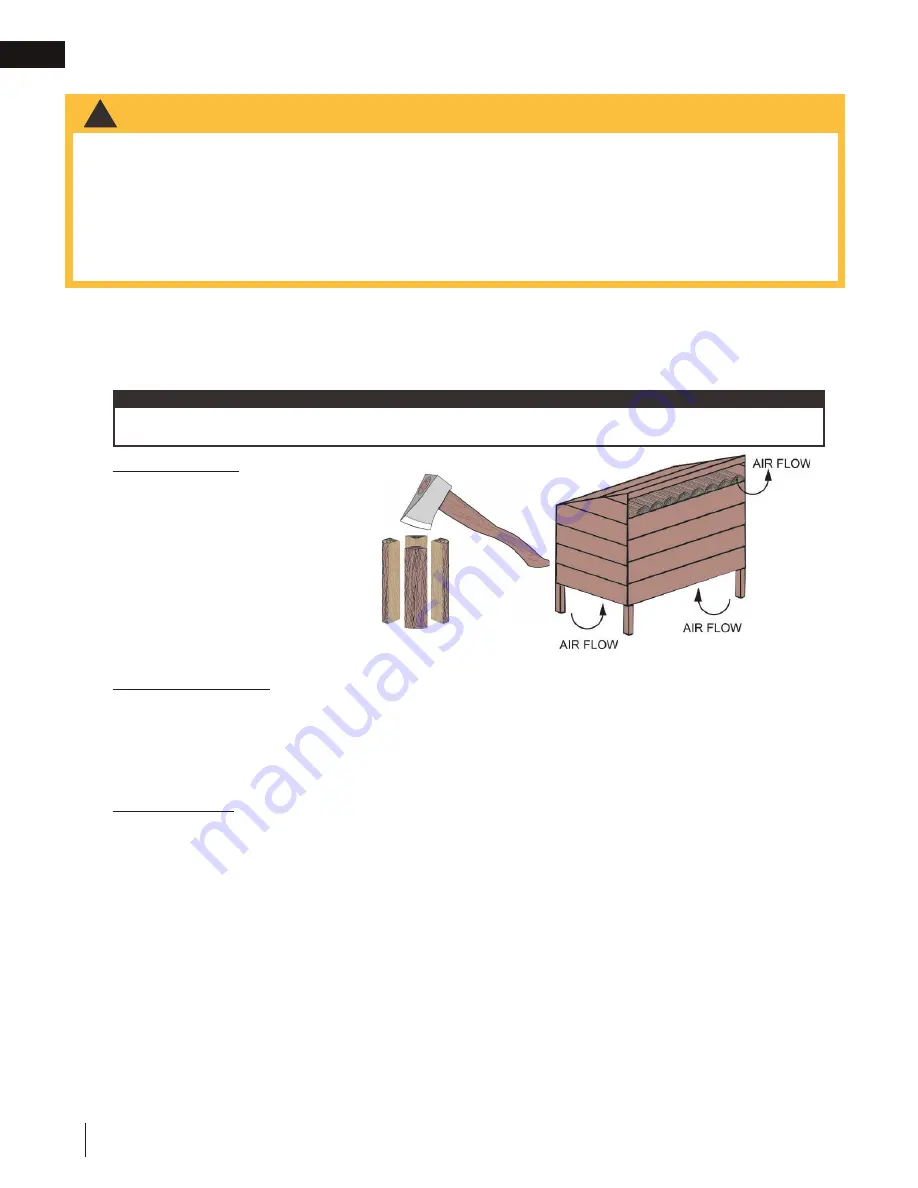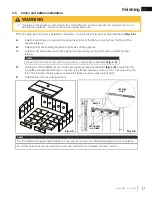
W415-2797 / A / 01.31.20
EN
30
maintenance
6.9 wood
!
WARNING
•
This appliance is designed to burn natural wood only. Do not burn treated wood, coal, charcoal, coloured
paper, cardboard, solvents or garbage. This appliance has not been tested with an unvented gas log set. To
reduce risk of fi re or injury, do not install an unvented gas log set into the appliance.
•
Higher effi ciencies and lower emissions generally result when burning air dried seasoned hardwoods, as
compared to softwoods or too green or freshly cut hardwoods.
•
Burning wet unseasoned wood can cause excessive creosote accumulation. When ignited, it can cause a
chimney fi re that may result in a serious house fi re.
•
Do not store fuel within the clearance to combustibles, or in the space required for re-fueling and ash removal.
Before loading the appliance, ensure all required insulation and baffl es (if equipped) are installed and situated
properly. For maximum effi ciency, when the appliance is thoroughly hot, load it fully to the specifi ed maximum
amount and burn at a medium low setting (if equipped). The whiteness of the bricks and the cleanliness of the
glass are good indicators of your operating effi ciency. Not enough heat is produced when only a few pieces of
wood are burned or the wood may not burn completely.
TYPES OF WOOD
Both hardwood and softwood burn
equally well in this appliance but
hardwood is denser, will weigh more per
cord and burn a little slower and longer.
Manufactured fi relogs made by
compressing 100% natural wood fi bre
can be safely used as fuel. Do not use
manufactured fi relogs if they contain
additives such as paraffi n, wax, binders
etc. Never burn more than two manufactured fi relogs at a time.
MOISTURE CONTENT
Burn only dry, clean unpainted wood that has been seasoned. It produces more heat and less soot or
creosote. Freshly cut wood contains about 50% moisture while after proper seasoning only about 20% of the
water remains. As wood is burned, this water boils off consuming energy that should be used in heating. The
wetter the wood, the less heat is given off and the more creosote is produced. Dry fi rewood has cracks in the
end of the grain.
STORING WOOD
Firewood should be split and stacked in a manner that allows for full air circulation and covered in early spring
to be ready for burning that fall. Dry fi rewood has cracks in the end grain.
Cut the wood so that it will fi t horizontally, front to back, making for easier loading and less of a likelihood that
the wood will roll onto the glass.
Fuel for the appliance must not be stored closer than the required clearances to combustibles (heat sensitive
material).
NEVER STORE WOOD IN THE ASH PAN COMPARTMENT (if applicable).
note:
Appliances surrounded by solid rock or brick will experience a longer heat up period as those materials
absorb the heat being generated.
















































